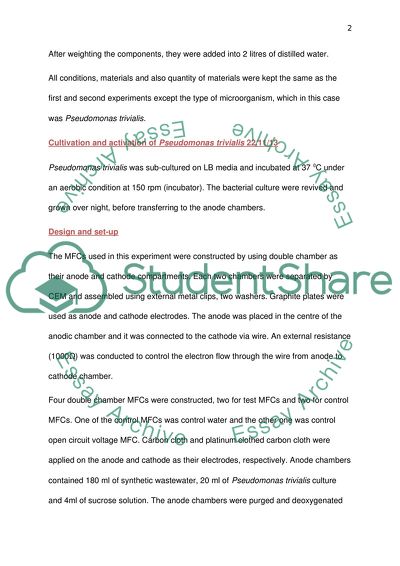Cite this document
(Biotechnlogy - Microbial Fuel Cell Lab Report Example | Topics and Well Written Essays - 5000 words, n.d.)
Biotechnlogy - Microbial Fuel Cell Lab Report Example | Topics and Well Written Essays - 5000 words. https://studentshare.org/physics/1806562-biotechnlogymicrobial-fuel-cell
Biotechnlogy - Microbial Fuel Cell Lab Report Example | Topics and Well Written Essays - 5000 words. https://studentshare.org/physics/1806562-biotechnlogymicrobial-fuel-cell
(Biotechnlogy - Microbial Fuel Cell Lab Report Example | Topics and Well Written Essays - 5000 Words)
Biotechnlogy - Microbial Fuel Cell Lab Report Example | Topics and Well Written Essays - 5000 Words. https://studentshare.org/physics/1806562-biotechnlogymicrobial-fuel-cell.
Biotechnlogy - Microbial Fuel Cell Lab Report Example | Topics and Well Written Essays - 5000 Words. https://studentshare.org/physics/1806562-biotechnlogymicrobial-fuel-cell.
“Biotechnlogy - Microbial Fuel Cell Lab Report Example | Topics and Well Written Essays - 5000 Words”. https://studentshare.org/physics/1806562-biotechnlogymicrobial-fuel-cell.


